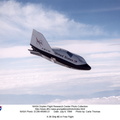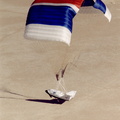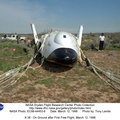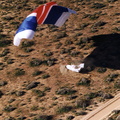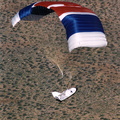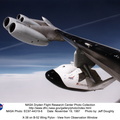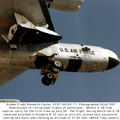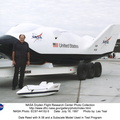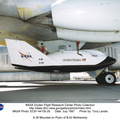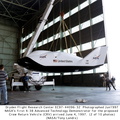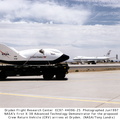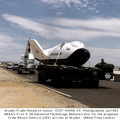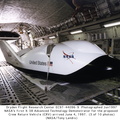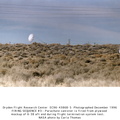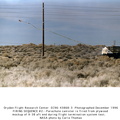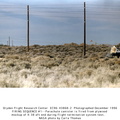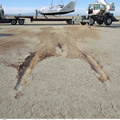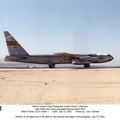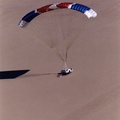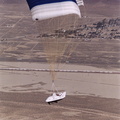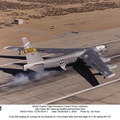
WIKIARCHIVES.SPACE
The Human Spaceflight Archive

Information
- Taken in
- Edwards Air Force Base
- Συντάκτης
- NASA/Carla Thomas
- Περιγραφή
- Looking like a giant air mattress, the world's largest parafoil slowly deflates seconds after it carried the latest version of the X-38, V-131R, to a landing on Rogers Dry Lake adjacent to NASAÕs Dryden Flight Research Center at Edwards, California, at the end of its first free flight, November 2, 2000. The X-38 prototypes are intended to perfect technology for a planned Crew Return Vehicle (CRV) "lifeboat" to carry a crew to safety in the event of an emergency on the International Space Station. Free-flight tests of X-38 V-131R are evaluating upgraded avionics and control systems and the aerodynamics of the modified upper body, which is more representative of the final design of the CRV than the two earlier X-38 test craft, including a simulated hatch atop the body. The huge 7,500 square-foot parafoil will enable the CRV to land in the length of a football field after returning from space. The first three X-38's are air-launched from NASA's venerable NB-52B mother ship, while the last version, V-201, will be carried into space by a Space Shuttle and make a fully autonomous re-entry and landing.
- Δημιουργήθηκε στις
- Πέμπτη 2 Νοέμβριος 2000
- Λευκώματα
- US SPACE PROGRAM / AERONAUTICS RESEARCH / X-38
- Source link
- https://www.dfrc.nasa.gov/Gallery/index.html
- Επισκέψεις
- 14
- Βαθμολογία κατάταξης
- χωρίς βαθμό
- Βαθμολογήστε τη φωτογραφία
- License
- Public Domain
- Modified by WikiArchives
- No (original)
- Λήψεις
- 0
Powered by Piwigo











